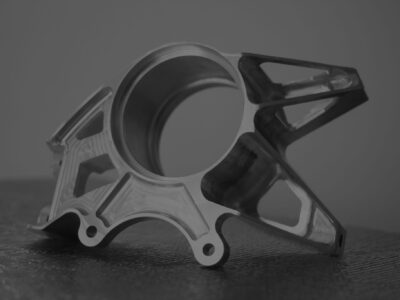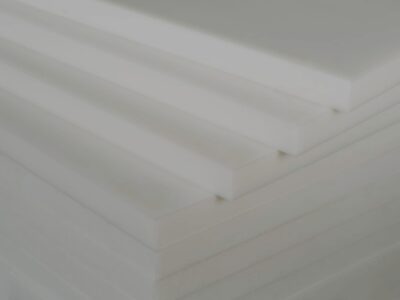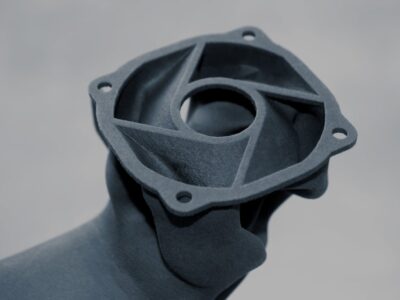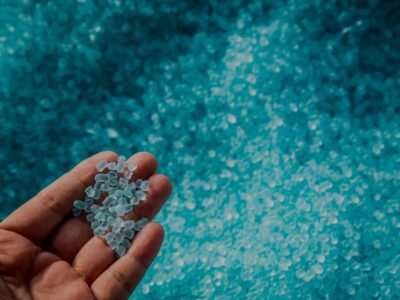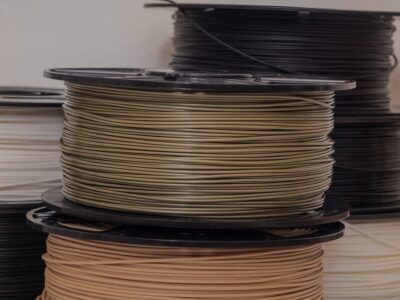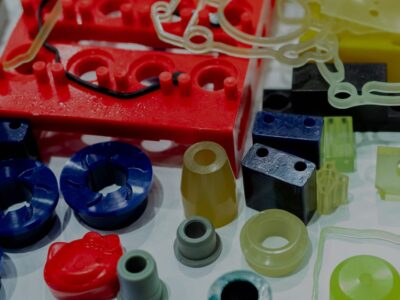Originally posted on fastradius.com on March 9, 2020
After a metal part has been created, it’s common practice to treat the exterior with a finish to meet visual or performance requirements. Finishing processes can provide a number of benefits, from increased part durability and tarnish resistance to higher electrical resistance or torque tolerance.
In this article, we’ll touch on some of the most widely-used metal finishing processes, as well as how each works, and some common applications that use these popular finishes.
Mechanical processes
Brushing
Many metal parts have rough edges, burrs, or other surface blemishes as a result of the manufacturing process. One effective way of removing these imperfections is brushing, which uses abrasive belts or wire brushes to give the part’s exterior a uniform, parallel grain surface texture.
Polishing
Polishing uses a cloth wheel to buff the part’s surface, resulting in a glossy and smooth untextured finish that’s ideal for decorative pieces. Buff polishing can also be used to round edges. Due to limitations with the cloth wheel’s reach, intricate or fragile parts or parts with recessed features may be better served by a different finishing process.
Tumbling
Tumbling removes burrs by agitating parts in large barrels filled with water and abrasive media — which may be made of steel, plastic, ceramic, or natural materials — of various shapes and sizes. This process, as well as vibratory bowl finishing, polishes and smooths parts, including potentially sharp edges, by creating rounded edges called radii. Tumbling occurs after production but before parts go through any additional plating or finishing processes.
Sand or bead blasting
Abrasive blasting processes use high-pressure streams of sand or glass beads to remove surface impurities on the substrate. While tumbling treats the entire surface of the part, sand or bead blasting can also be used to treat specific areas. This creates a smooth and clean surface texture, especially noticeable in softer metals.
Chemical and electrical processes
Powder coating
Powder coating applies a decorative finish of melted plastic powder to the surface of the substrate. The process can create glossy, matte, or textured surfaces that appear similar to paint but provide far greater durability.
Hot blackening
Hot blackening adds a layer of black oxide to the surface of a substrate through a high-temperature process that runs the part through a set of tanks filled with cleaners, caustics, and coolants. The result is a matte black surface finish with high abrasion resistance. This finish is commonly seen on tools, firearms, and auto parts.
Electrocoating
Also called e-coating, this process submerges large parts in an epoxy paint solution and uses electrically charged particles to evenly apply a layer of paint that helps protect against corrosion — something that’s especially helpful for jewelry. E-coatings can be used as primer coats for furthering finishing.
Electroplating
The plating process is similar to e-coating. Instead of paint, however, a thin layer of metal is applied to the substrate surface using an electric current. This process bolsters the durability of the part, as well as its corrosion resistance.
Electropolishing
Electropolishing uses an electrochemical process to smooth the surface of a metal substrate ion by ion, resulting in smooth surface that is microscopically featureless.
Anodizing
Primarily used to finish aluminum parts, anodizing uses a chemical process to change the surface of the substrate to aluminum oxide. The process not only protects the part from everyday wear and tear, but it makes the part more impact- and corrosion-resistant. While typically colorless, the anodized finish can be dyed.
Passivation
This non-electric process renders stainless steel parts more resistant to rust by using acid to remove free iron from the substrate surface. This creates an inert, or passivated, protective layer that is less likely to corrode.
Chromate conversion coating
This process uses chromic acid to coat the entire surface of certain metal substrates, including aluminum and zinc. This not only makes the parts highly corrosion-resistant, but it also gives them self-healing qualities, so that if the metal becomes scratched or abraded, the chromate finish will slowly cover the damage, preventing corrosion from entering the pores of the metal.
Aesthetic finishing
Painting
Paint is the most common method of protecting steel parts. The process typically includes three layers of epoxy and polyester glass flake paints designed to keep the steel safe from corrosion and damage.
Pad printing
This process transfers 2D images onto 3D parts using an etched plate and a silicone pad. Pad printing is commonly used in the industrial and garment industries for printing designs onto garment tags, flash drives, pens, watch faces, and other surfaces.
Screen printing
Screen printing uses a mesh and blocking stencil to transfer ink onto a part. A squeegee or other tool spreads ink across the open mesh apertures, which catalyzes contact between the screen and the part’s surface, thereby depositing the ink.
Hydrographics
Also known as immersion printing, this process involves placing the substrate in a tank filled with water and a soluble printed film. This allows the finishing layer to completely coat the surface of the part, which is especially useful for parts with complex geometries. The finish that hydrographics provides is extremely durable, offering increased chemical- and UV-resistance.
Choose the right processes for you
As this list shows, there are quite a few options to choose from when it comes to finishing services for metal parts. Which process or combination of processes makes the most sense will of course depend on a few factors, including budget, timeline, and the part’s intended end-use.
Balancing all of these factors can be a challenge. That’s why engineers, designers, and entrepreneurs choose to partner with SyBridge. Our team of experts works with you at every step of manufacturing process — from designing, prototyping, and iterating to post-production and fulfillment — to make sure that every part is optimized for its application and backed by quality assurance. Contact us today to get started.

